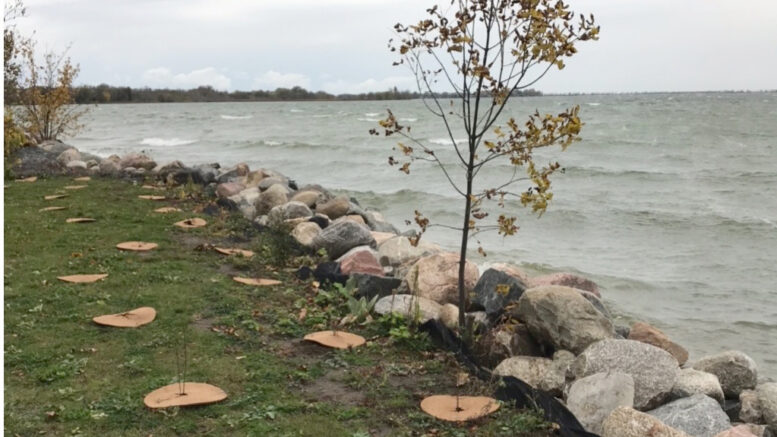Adam Prudhomme
Editor
Property owners looking for natural ways to mitigate flood damage and prevent shoreline erosion will want to tune in to Friends of the Napanee and Salmon Rivers’ March 23 virtual presentation.
Starting at 7 p.m. and broadcast via Zoom, Watersheds 101 and Shoreline Restoration and Planting Programs will be presented by Maya Navrot of Quinte Conservation and Chloe Lajoie of Watersheds Canada. Their talk will cover the health of both the Napanee and Salmon Rivers as well as discuss some of the tree planting programs available for homeowners within both watersheds.
“We’re focusing very much on re-naturalizing shorelines, which is why we have this Natural Edge Program with Watersheds Canada,” explains Navrot, outreach and stewardship coordinator with Quinte Conservation. “That will be half of the talk about why we have this program. Bringing back some of this forested riparian, which we’ll talk about and the benefits of that, which include benefits for wildlife but also helping to slow and control erosion and also protecting the water quality in our local lakes and rivers.”
Now in its third year, the Natural Edge Program covers up to 75 per cent of the cost for waterfront property owners to plant native species near the shoreline to reduce shoreline erosion.
“It involves a free site visit and individualized planting program for that landowner that brings back native trees, shrubs and wildflowers on to the shoreline in a way that also beautifies the shoreline, maintains views to the water but also contributes back to ecosystem and water system health,” explains Navrot. “It’s a great, fully inclusive program. We pursued this program when we were hearing from landowners that they wanted to do this kind of project but they felt they didn’t have the knowledge or the expertise to know how to do it themselves from picking the species to putting the shovel in the ground.”
Navrot theorizes that recent floods coupled with people spending more time at home during the pandemic has led to increased interest in planting species that look nice but can also be beneficial.
“A couple of years of high water in Lake Ontario and it was felt in the lower parts of those river systems, like in Napanee, that has sparked a lot of interest in what landowners can do to help protect their shorelines, especially from erosion,” said Navrot. “Putting vegetation and root systems back in to the soil is one way to help address long term soil erosion issues.”
The talk isn’t exclusive to those living on the shoreline. Navrot says they will focus on programs that are available to everybody within the watershed. Decades of deforestation have left this region with an estimated 20 to 30 per cent of the tree cover it once had in the 1800s. The result is fewer trees, which act as sponges, to help combat rising water levels.
“Restoring the landscape with native tress, shrubs and wildflowers is a huge part of the picture,” said Navrot. “We’ll start talking about what the landscape looked like hundreds of years ago and compare that with how it looks today. This push to get trees back on the land is a big part of that picture to not just ensure that we have healthy and diverse eco-systems but also helping to protect our water sources and it will also help to slow and mitigate the impacts of flooding.”
To help meet their objective, it will mean more than just re-planting along the shore.
“Everybody is part of a watershed and we all have a role to play, whether we’re on a shoreline or not,” she said. “We’ll have programs that we can talk about for urban-residential, to farmers, there’s something that everybody can do to help to improve the watershed.”
To register for the free online Zoom presentation, visit
us02web.zoom.us/meeting/register/tZIscOmqpjIrHNO6E2QKOard2Kw_aJaxi0T5.
The presentation is the fourth of the ongoing Winter Speaker Series, which is presented by both the Friends of the Napanee River and the Friends of the Salmon River.

